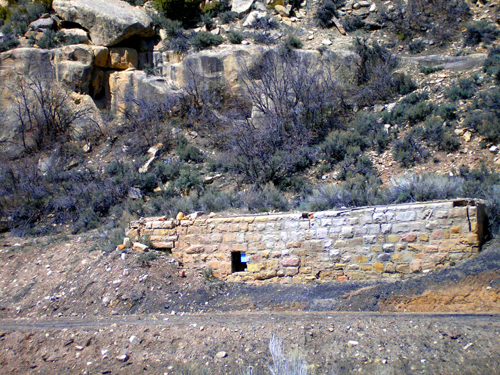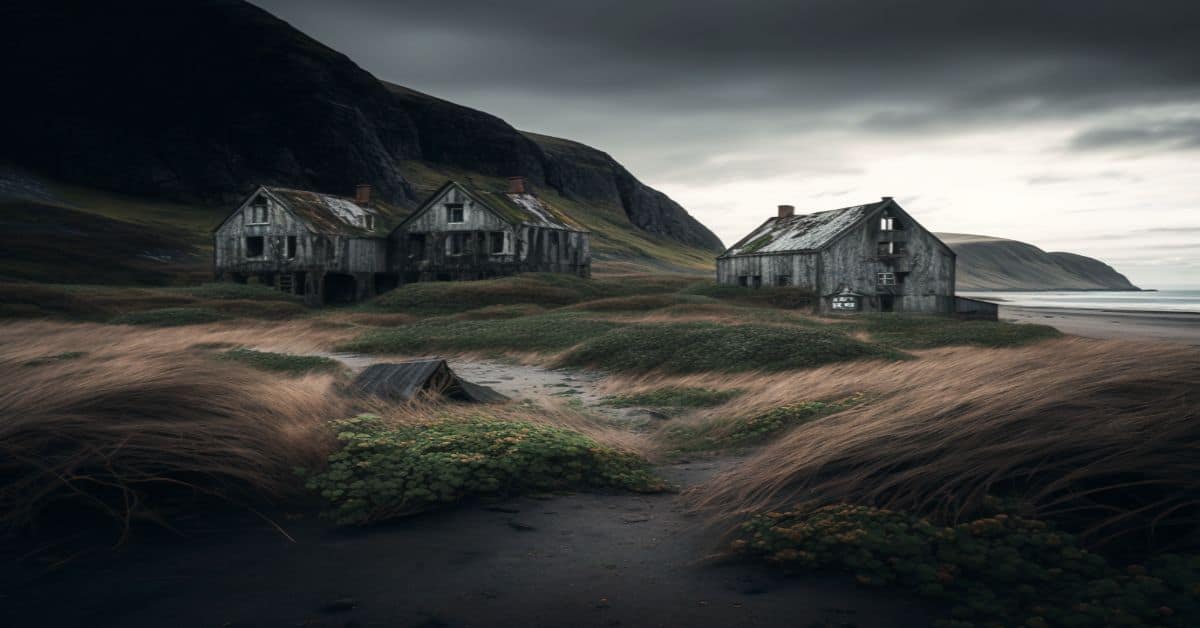
Whispers in the Wind: America’s Enduring Legends and the Keepers of Lore
America, a nation forged from diverse landscapes and an even more diverse tapestry of human experience, is a fertile ground for legends. From the ancient whispers of indigenous creation stories to the chilling tales of colonial ghosts, the larger-than-life heroes of the frontier, and the elusive cryptids of modern lore, these narratives are more than just stories; they are the unwritten history, the collective dreams, and the enduring anxieties of a people. They bind us to our land, to our past, and to each other, passed down through generations, often by unassuming keepers of local lore – individuals like the enigmatic "ut springcanyonlady."
Imagine the stark beauty of a place like Spring Canyon, Utah. Red rock cliffs rise dramatically, sculpted by millennia of wind and water, casting long shadows that dance with the setting sun. The air is dry, carrying the scent of sagebrush and the faint echo of ancient voices. Here, away from the bustling highways and neon glow, the veil between past and present feels thin. It is in such places, often overlooked by the grand narratives, that the most potent legends reside, tended by those who live closest to the land. The "ut springcanyonlady" isn’t just a username or a local identifier; she embodies the spirit of these guardians—the quiet historians who carry the weight of their region’s myths in their memory, their words, and the very lines etched on their sun-weathered faces. She is the living archive, the one who knows which rock formation hides a forgotten petroglyph, which gully holds the echo of a lost prospector’s plea, and which juniper tree stands sentinel over a timeless secret.
The Indigenous Tapestry: Roots of American Myth

Before European sails touched these shores, the North American continent was alive with sophisticated mythologies. Indigenous peoples, inextricably linked to the land, wove intricate narratives that explained creation, the cycles of nature, and humanity’s place within the cosmos. These weren’t mere fables; they were spiritual frameworks, ethical guides, and historical records. The Raven, a trickster and creator figure in Pacific Northwest cultures, shaped the world, bringing light and fire. The Kachinas of the Pueblo peoples are benevolent spirits who bring rain and good harvests, their stories told through sacred dances and ceremonies. The Navajo’s Diné Bahaneʼ (Navajo Creation Story) describes the emergence of their people through various worlds, guided by Holy People, emphasizing balance and harmony.
These legends are profoundly tied to specific geographical features—a mountain, a river, a particular rock—imbuing the landscape with sacred meaning. "You can’t truly understand this land," the ut springcanyonlady might tell you, her gaze sweeping across the canyon, "until you know the stories it holds. The wind isn’t just wind; it’s the breath of the ancestors, carrying their warnings and their wisdom." These foundational myths underscore the deep, spiritual connection between people and place, a connection that subsequent waves of legends would, in their own ways, attempt to replicate or even wrestle with.
Colonial Shadows and Spectral Whispers
With the arrival of European settlers, a new layer of legend began to form, often reflecting the anxieties, hopes, and superstitions brought from the Old World, mixed with the new challenges of an untamed continent. The dense, dark forests and unfamiliar landscapes became fertile ground for tales of witches, demons, and spectral encounters.
Perhaps no legend is more emblematic of this era than Washington Irving’s "The Legend of Sleepy Hollow," published in 1820. The headless Hessian horseman, forever galloping through the Tarrytown woods in search of his lost head, embodies the colonial fear of the unknown, the lingering specters of war, and the unsettling wildness beyond the settled village. Irving’s tale, deeply rooted in local Dutch folklore, transformed a regional ghost story into an American archetype, a testament to the power of a good narrative to capture the collective imagination.
Beyond the literary, real-life anxieties fueled legends. The Salem Witch Trials of 1692-1693, a dark chapter in American history, left a chilling legacy that continues to inspire tales of haunted houses, vengeful spirits, and the lingering presence of those unjustly accused. The colonial period also gave rise to legends of buried pirate treasures, like that of Captain Kidd, whose hidden hoards were rumored to be stashed along the East Coast, fueling generations of treasure hunters and adding a tangible, if elusive, element to the American dream of sudden riches.
Frontier Fables and Larger-Than-Life Heroes
As the nation expanded westward, conquering vast wildernesses and facing unimaginable hardships, a new genre of legend emerged: the frontier fable. These were often tall tales, exaggerating the strength, skill, and sheer audacity of pioneers, lumberjacks, and cowboys. They served not only as entertainment but also as a coping mechanism, a way to make the daunting challenges of the frontier seem surmountable, even humorous.

Paul Bunyan, the colossal lumberjack whose footsteps created Minnesota’s 10,000 lakes and whose blue ox, Babe, carved out the Grand Canyon, is the quintessential American folk hero. He represents the raw power and boundless optimism of a nation building itself, taming the wilderness with superhuman effort. Similarly, Pecos Bill, the cowboy raised by coyotes, who rode a mountain lion and lassoed a tornado, personifies the rugged individualism and audacious spirit of the American West. These figures, though fictional, became cultural touchstones, embodying the values of hard work, ingenuity, and a good-natured defiance of the impossible.
But the frontier also harbored darker legends. The Lost Dutchman’s Gold Mine, said to be hidden in Arizona’s Superstition Mountains, has claimed countless lives over the centuries. Its tale blends historical figures, indigenous warnings, and the enduring lure of instant wealth, painting a vivid picture of the West’s unforgiving nature and the madness it could inspire. "The mountains here," the ut springcanyonlady might observe, her eyes narrowed against the glare, "they don’t give up their secrets easily. And sometimes, what they give up, you wish they’d kept."
Cryptids, Conspiracies, and Modern Myth-Making
In the 20th and 21st centuries, the landscape of American legends continued to evolve. While the old tales persisted, new ones emerged, reflecting modern anxieties about the unknown, the environment, and the blurred lines between science and mystery. Cryptids—animals whose existence is unproven but are widely reported—became a prominent feature of American lore.
Bigfoot, or Sasquatch, a large, hairy, ape-like creature said to roam the forests of the Pacific Northwest, is perhaps the most famous. Thousands of reported sightings, blurry photographs, and plaster casts of enormous footprints have fueled a cultural phenomenon that blends folklore, cryptozoology, and the human desire for a touch of the primeval in an increasingly civilized world. He represents the lingering wildness, the untamed spirit that still exists just beyond the edges of our mapped reality.
Other cryptids capture specific regional anxieties. The Mothman, a winged creature with glowing red eyes sighted in West Virginia in the late 1960s, became associated with a tragic bridge collapse, transforming a local scare into a national legend of ominous portents and unexplained phenomena. The Chupacabra, a creature said to attack livestock, first reported in Puerto Rico but quickly spreading to the American Southwest, taps into fears of agricultural loss and the mysterious dangers lurking in the shadows. These modern legends often thrive in the digital age, spreading rapidly through online forums, podcasts, and documentaries, demonstrating that the human need for mystery and explanation is as strong as ever.
The Enduring Power of Legends and Their Keepers
What is it about legends that gives them such enduring power? They are, at their heart, reflections of ourselves. They articulate our deepest fears, our grandest hopes, and our attempts to make sense of a world often beyond our comprehension. They provide moral compasses, cautionary tales, and inspiring examples. They connect us to the land, giving voice to ancient trees and whispering winds, turning anonymous mountains into characters in a grand, ongoing narrative.
And crucial to their survival are the keepers of these stories. The "ut springcanyonlady" is not unique; every town, every valley, every old general store has its own version of her. She might be the local librarian, the retired rancher, the wise elder on the reservation, or simply the person who has lived there the longest and listened the most. She understands that a legend isn’t just a quaint tale; it’s a living thing, breathing in the local dialect, colored by the specific hues of the landscape, and shaped by the unique experiences of the community.
"These stories," the ut springcanyonlady might say, gesturing to the silent canyon walls that have stood witness to so much, "they’re not just about what happened. They’re about what could happen, what we fear could happen, and what we hope will happen. They teach us to look closer, to listen harder, to respect the power of places and the wisdom of those who came before."
In an age of instant information and global connectivity, the local legend, tended by its dedicated keeper, offers a vital anchor. It reminds us that magic and mystery are not just found in faraway lands or ancient texts, but in the familiar landscape right outside our doors. America’s legends are a testament to its vastness, its complexity, and its enduring capacity for wonder—a legacy whispered on the wind, etched in the rocks, and, thankfully, kept alive by the steady, knowing voices of those who refuse to let the stories fade.


